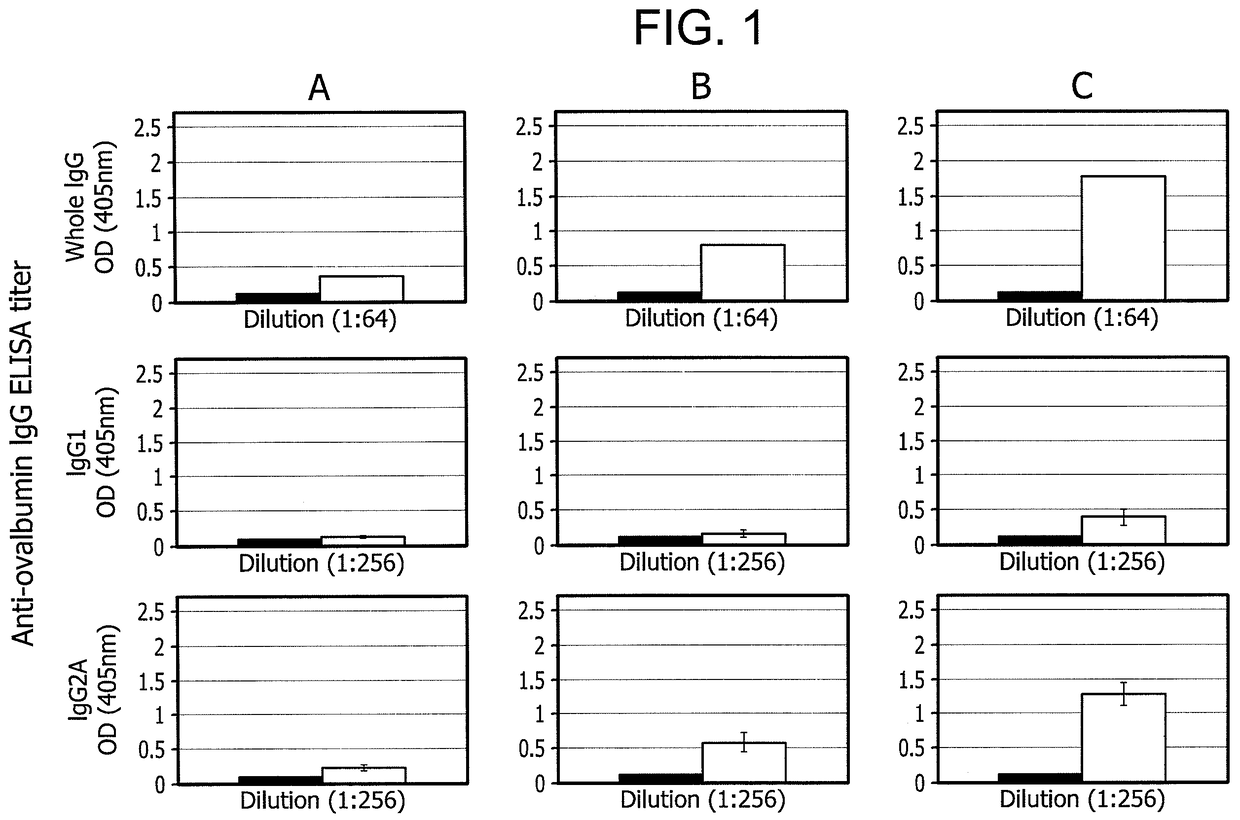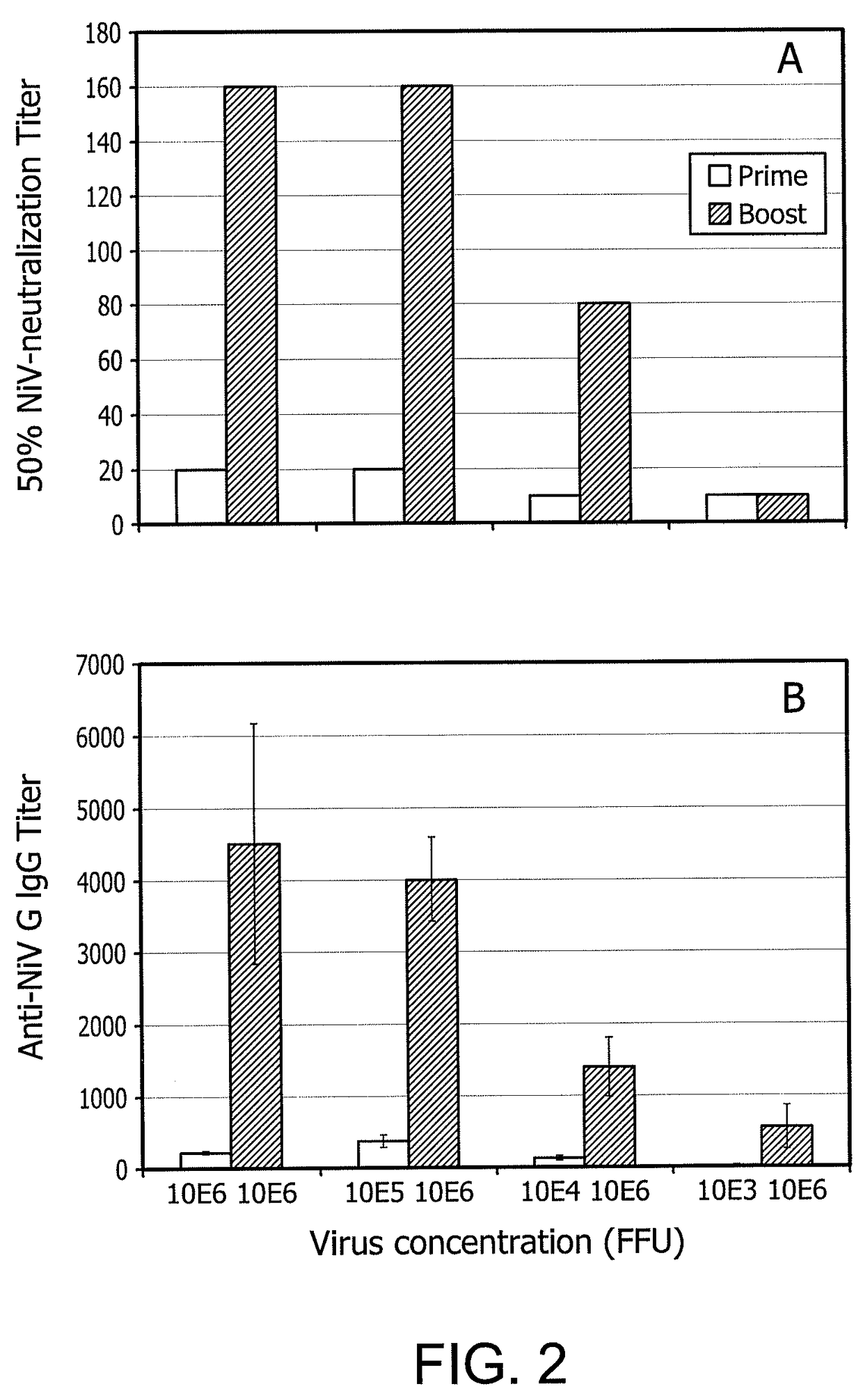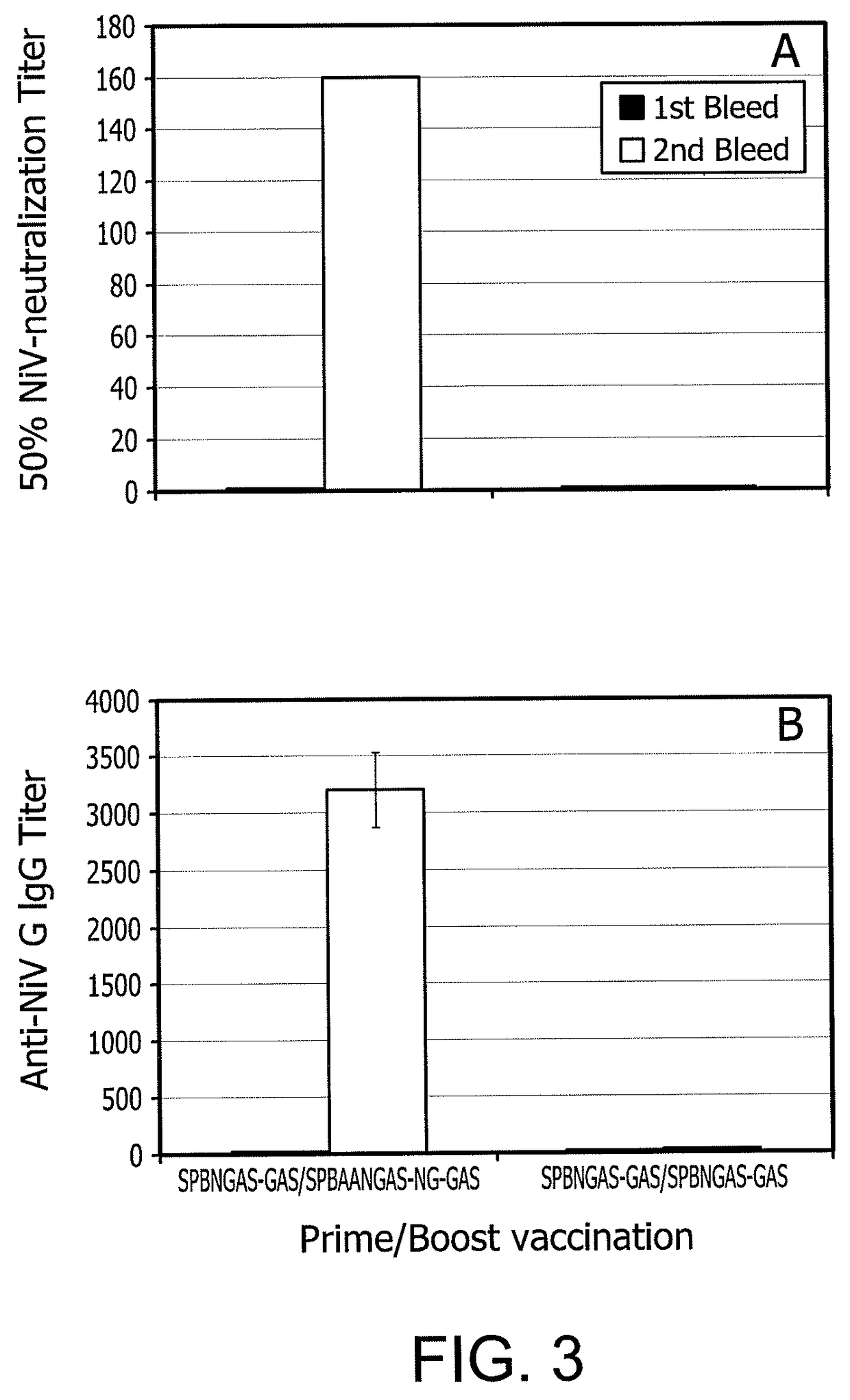Immunization with rabies virus vector expressing foreign protein antigen
a technology of rabies virus and antigen, applied in the field of immunology, can solve the problems of increasing the reactogenicity and toxicity of adjuvants, increasing the cost of adjuvants, and increasing the potency of vaccines
- Summary
- Abstract
- Description
- Claims
- Application Information
AI Technical Summary
Benefits of technology
Problems solved by technology
Method used
Image
Examples
example 1
Preparative Example 1
Recombinant Rabies Virus Vectors SPBNGAS and SPBNGAS-GAS
[0114]Production of the recombinant RV vectors SPBNGAS and SPBNGAS-GAS is described in U.S. Pat. No. 7,695,724. Recombinant RV vaccine SPBNGAS is based on the prototype recombinant virus SPBN, which was derived from the SAD B19 cDNA clone (Schnell et al., 1994, EMBO J 13:4195-4203).
[0115]To reduce the pathogenicity of the RV vaccine vector SPBN, the SPBN G gene was replaced with a similar G gene encoding a single amino acid exchange, Arg3333→Glu333 to form the vector SPBN-GA. The mutant G gene encoding the Arg3333→Glu333 substitution is designated as “GA”. For this approach, the RV G gene was amplified by PCR using Vent polymerase (New England Biolabs, Beverly, Mass.) from SN10-333 (Morimoto et al., Vaccine 19:3543-3551, 2001) and cloned into SPBN. The resulting plasmid was designated pSPBN-GA. To construct a recombinant RV expressing two identical RV Gs, the G gene was amplified by PCR using Ventpolymerase...
example 2
Preparative Example 2
Recombinant Rabies Virus Vector SPBAANGAS-GAS
[0118]To facilitate insertion of foreign antigen genes into the SPBNGAS vector, AsiSI and AscI restriction sites were introduced. A fragment of pSPBNGAS containing intergenic and regulatory sequences between PacI and BsiWI was amplified using Deep Vent polymerase (New England Biolabs, Inc., Beverly, Mass.) and primers InterG BA(+) (5′-CGA TGT ATA CGT ACG TTT TTG CGA TCG CCG TCC TTT CAA CGA TCC AAG TC-3′[BsiWI site underlined; AsiSI site in boldface] (SEQ ID NO:7)) and InterG AN(−) (5′-CTT AGC GCT AGC AAA AAG GCG CGC CGG AGG GGT GTT AGT ITT TTT CAT G-3′[NheI site underlined; AscI site in boldface] (SEQ ID NO:8)). The PCR product was digested with BsiWI and NheI and ligated into RV vaccine vector pSPBNGAS, previously digested with BsiWI and NheI resulting in the vector designated as pSPBAANGAS. A second copy of GAS gene was inserted into pSPBAANGAS between AscI and NheI in the similar manner using primers that contain t...
example 3
Preparative Example 3
Recombinant Rabies Virus Vector SPBAANGAS-NG-GAS
[0120]The NiV G gene was cloned into or pSPBAANGAS-GAS as follows, resulting in the double GAS variant pSPBAANGAS-NG-GAS. The NiV G gene was amplified using Deep Vent polymerase (New England Biolabs, Inc., Beverly, Mass.) and the G gene-specific primers
[0121]
NGB(+)(SEQ ID NO: 11))(5′-CCG GAA TTC CGT ACG AAG ATG CCG GCAGAA AAC AAG AAA GTT AGA TTC GA -3′[BsiWI site underlined; start codonin boldface]andNGA2(−)(SEQ ID NO: 12))(5′- TGC TCT AGA GCG ATC GCC GTT TAT GTACAT TGC TCT GGT ATC TTA ACC -3′[AsiSI site underlined; stop codonin boldface].
BsiWI and AsiSI recognition sites were introduced at the 5′ and 3′ of the NiV G gene (underlined). The PCR product was digested with BsiWI and AsiSI and ligated into RV vaccine vector pSPBAANGAS-GAS, previously digested with BsiWI and AsiSI. The presence of inserts and the flanking sequences were confirmed by sequencing.
PUM
| Property | Measurement | Unit |
|---|---|---|
| time | aaaaa | aaaaa |
| time | aaaaa | aaaaa |
| time | aaaaa | aaaaa |
Abstract
Description
Claims
Application Information
 Login to View More
Login to View More - Generate Ideas
- Intellectual Property
- Life Sciences
- Materials
- Tech Scout
- Unparalleled Data Quality
- Higher Quality Content
- 60% Fewer Hallucinations
Browse by: Latest US Patents, China's latest patents, Technical Efficacy Thesaurus, Application Domain, Technology Topic, Popular Technical Reports.
© 2025 PatSnap. All rights reserved.Legal|Privacy policy|Modern Slavery Act Transparency Statement|Sitemap|About US| Contact US: help@patsnap.com



